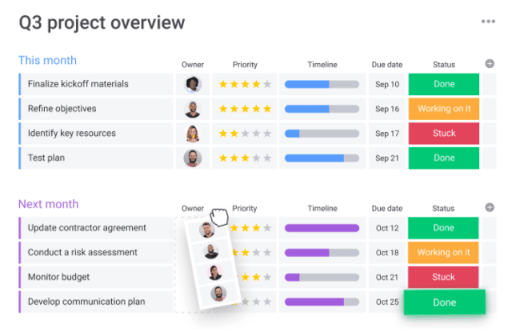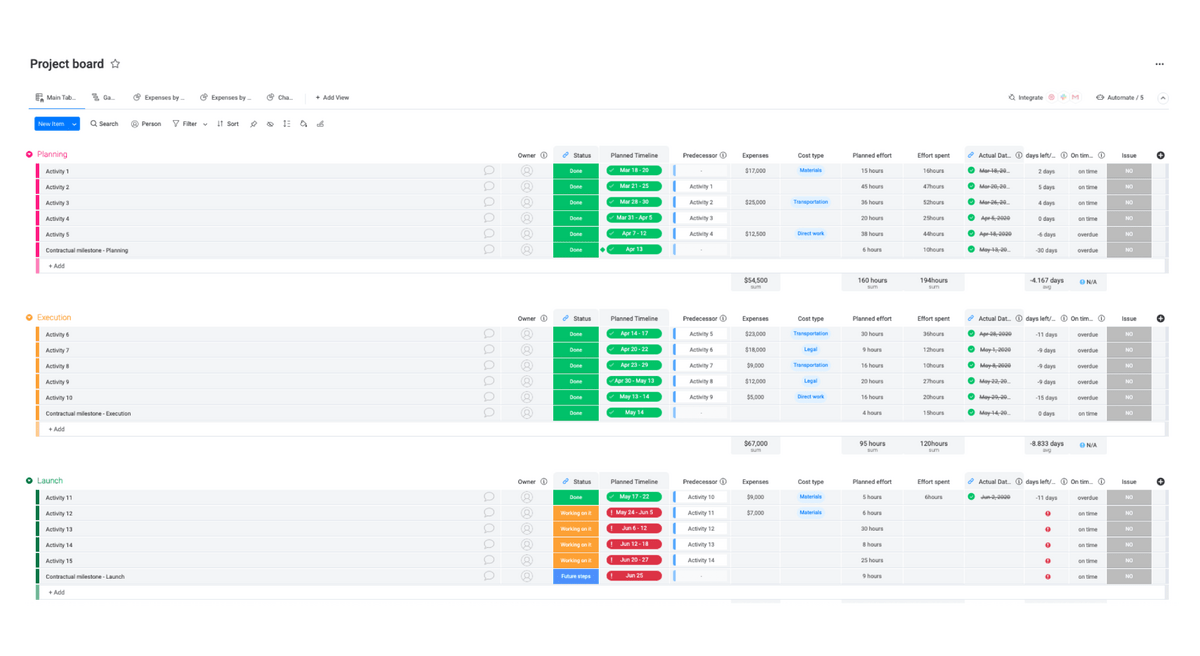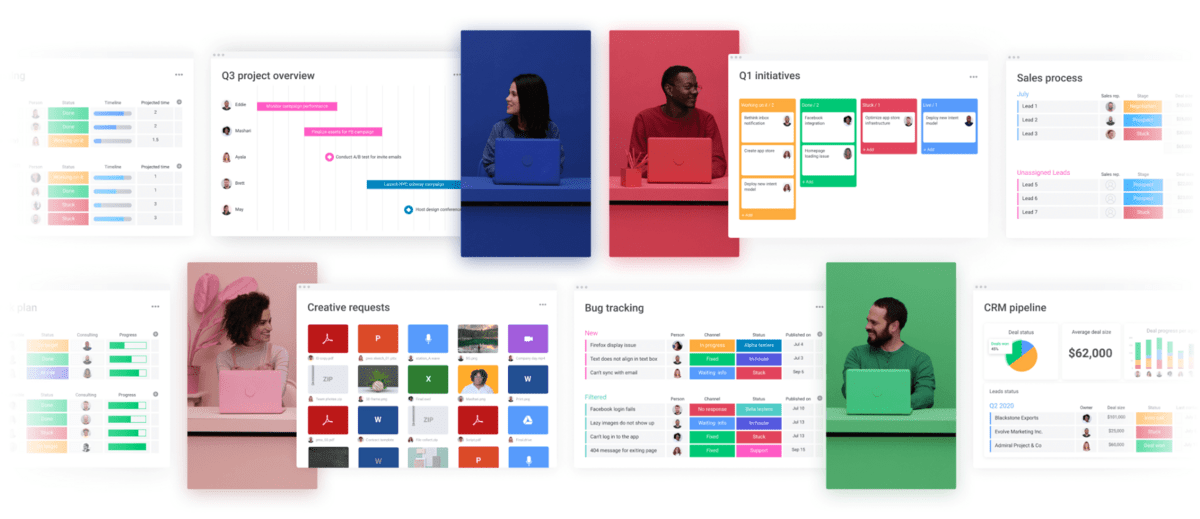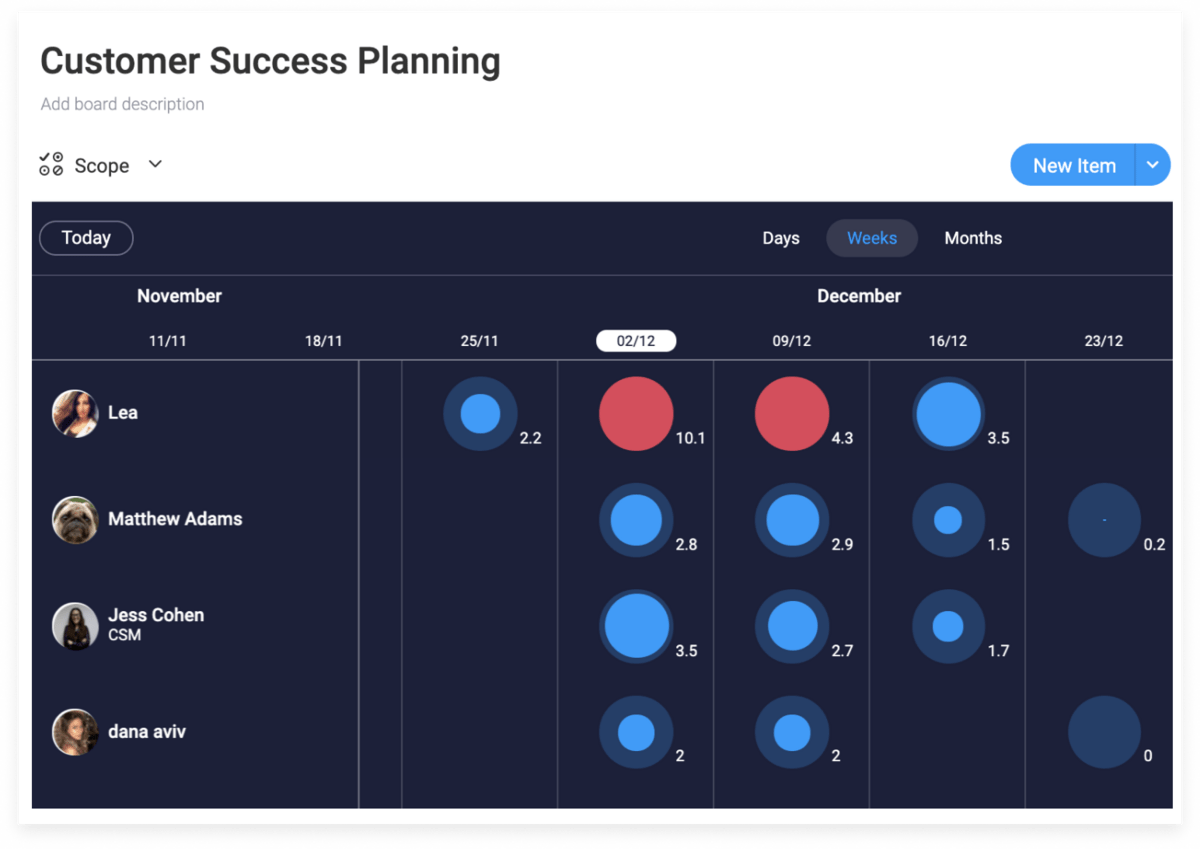A hybrid work schedule has certainly presented itself as the new norm for many teams and organizations because in theory, it should give you the best of remote working while aiming to still hone in one the benefits of collaboration and execution.
In order to combine remote work and in-office work settings the right way, however, you have to create and manage a system that honors the flexibility and autonomy of remote work schedules while maintaining the orderly and highly communicative nature of traditional workflows.
Today, we’ll show you exactly what a hybrid work schedule is, how it works, and how to manage this modern take on office schedules so your remote employees and onsite contributors are in harmony.
What is a hybrid work schedule?
What exactly does it mean to work hybrid? A hybrid work schedule combines on-premise and remote models and creates a unique (and more flexible) environment — one where team members alternate time in the office with a bit of remote work.
For comparison’s sake, here are are three different employee work models:
- On-premise: Traditional teams that work in the office
- Remote: Teams made up of people working from different locations
- Hybrid: A combination of the other two models
What is hybrid work?
What does hybrid work mean? Hybrid work is designing the work experience for and around workers, regardless of their location. There are also different types of hybrid work options. Some of the most common include:
- Split-team: You have both full-time remote workers and full-time on-premise employees.
- Shifts: Everyone works on-premise a few days a week and remotely part of the week.
- Flexible: Your team members can choose between working from home or at the office.

Now that you understand the basics of hybrid work schedules, let’s explore the different pros and cons involved.
Pros:
Some benefits of implementing a hybrid work schedule include:
- More flexibility: You can plan your schedule with more flexibility and work with less stress.
- Hire both locally and globally: Find talent all over the world while keeping a physical team.
- Reduce costs: Reduce your office space, office materials, and overall overhead costs.
Cons:
Some of the main disadvantages of adopting a hybrid work schedule include:
- Coordination can be a true challenge: Orchestrating a hybrid team can be time-consuming and difficult at the beginning.
- Technology: Reduced face time can require adopting new technology, which can be costly.
- Learning curve: Managing projects with a hybrid team involves a deep learning curve.
The beginning of a trend
Even though hybrid work schedules aren’t new, they’re definitely trending up.
The COVID-19 pandemic forced organizations all over the world to reinvent the way they work. Many people started working from home, which increased the need for asynchronous communication channels and digital workspaces. In other words, the pandemic accelerated the adoption and growth of remote work.
This adoption revealed a few unexpected insights about remote teams:
- Remote teams are more productive: Remote work seems to improve overall productivity, according to research.
- Employee engagement: Nearly 3 out of 10 employees would accept a 5% pay cut for the opportunity to work remotely at least some of the time.
- Remote teams are cheaper: Having a remote team can reduce overhead costs dramatically.
Unfortunately, not all organizations can become fully remote and the return to the office is something that has to be handled with sensitivity. Many industries, business models, and job roles require people to be on-site.
For that reason, organizations started looking for ways to get the best of a remote environment without neglecting mission-critical operations that require physical presence. In the next section, we’ll cover different processes to manage both individual and group hybrid schedules.
How to manage your individual hybrid work schedule
If you’re an employee who wants to manage a hybrid work schedule more efficiently, here are some helpful tips:
Categorize activities and chunk your work into projects
Managing a hybrid schedule isn’t hard, but it requires self-discipline and organization.First, you must look for ways to stay accountable. This can be challenging, especially if you’ve never worked remotely. One of the best ways to do it is by creating time blocks and segmenting your tasks. For example, you could create 2 categories:
- Office work
- At-home work
Then, identify which tasks are best completed in the office vs. at your home. For instance, you could complete tasks that require deep thinking at your home, as you’re able to work with fewer interruptions and schedule collaborative tasks for office time. To do this, we suggest you look for project management software that helps you schedule your work and manage your time more efficiently.
For example, with monday.com, you get access to all the features you need to manage your personal schedule.

You can create multiple boards, with each board having its own configuration and features. For example, you could add a Time Tracking Column to instantly or manually monitor how much time you’re spending on specific tasks and activities.

Communicate with your leaders
Lack of communication can cause project delays, confusion, and bottlenecks in your organization.To avoid this type of problem, schedule a meeting with your managers to set expectations and create a clear picture of your responsibilities in both the office and your home. This could include:
- What days should you go to the office?
- What kind of tools or software do you need at home? Will the company provide access to such tools?
- How will the organization make sure remote workers get access to the same information as their in-office peers.
Use the right technology
A solid Work Operating System (Work OS) can help you manage your work, organize your schedule, and better adapt to a hybrid model. Before selecting a specific software, make sure it offers the following features:
- Visualizations: Different data views to oversee your projects and tasks from different perspectives and angles.
- Reporting: Powerful reporting features to track the progress of your work.
- Collaboration: Multiple collaboration features that help you communicate with team members more efficiently.
- Project management: Features that help you manage projects from start to finish, including time management features.
- Customizations: The ability to customize the platform to fit your exact needs.
An added perk is any feature that helps you get started right away, like templates. With monday.com, you get access to over 200 pre-built templates for different use cases. No matter what industry you’re in, you’ll find a template that meets your exact needs.

How to manage your team’s hybrid work schedule
Transitioning from a traditional — or fully remote — work model to a hybrid model can be hard. Here’s a helpful process to make the transition smoother:
Set the right expectations
Remember that a hybrid environment is new to the majority of your team members. Make sure to set the right expectations and be clear about your goals.
- Why are you moving to a hybrid model?
- What do you expect from your team?
- How will the transition work?
- Will you provide specific training?
- Will the team schedule their own hours?
Being transparent about what you’re trying to achieve is key for transitioning to a hybrid work model — this can help nip a lot of confusion and inconsistency in the bud.
Define clear priorities for your team
Setting expectations is crucial, but sometimes it’s not enough. You must define a clear list of goals and prioritize work according to specific objectives. For instance, team members must know whether they should finish a specific project or attend a virtual meeting. They should also know what tasks are more urgent than others.
With monday.com, you can assign tasks to specific team members and set deadlines, oversee progress, notify people, and even build public dashboards for your entire organization. This makes it really easy to communicate priorities and keep everyone aligned throughout the entire project life cycle.

Centralize your hybrid workplace
In a hybrid model, it’s especially important that you build a single source of information for your team. This way, everyone can understand what’s going on in the organization.
monday.com allows you to invite your entire team to work under the same platform. You can start as small as you want and grow your way up to 200+ team members. Your teams will also get access to multiple tools and features that will simplify your communication, including:
- Tagging: Tag specific team members between tasks to add context.
- Interactive whiteboards: Brainstorm ideas in real-time through interactive whiteboards.
- Activity Log: Track the history of changes and improve your information governance.
- In-context communication: Add context to any activity with comments and updates in real-time.
- workdocs: monday workdocs are a central place for you and your team to collaborate, brainstorm, plan, and execute. Drop that notebook, close Google Docs, and toss away all your sticky notes.
- Automations: Automate over 250,000 actions per month with ease.
To get a more complete overview of monday.com’s communication features, we suggest you take a look at this short video:
Organize your team’s workload
Finally, special attention must be paid to your team’s workload — it’s easier to lose track of who is over or under-allocated when you don’t see them every day. To make sure no one’s over or under-worked, we suggest you tap into a robust Work OS that helps you organize your team’s workload in a visual interface.
For example, with monday.com’s Workload view, you can easily see how your team’s work is allocated. You can visualize who’s doing what, when it should be done, and how your resources are used.

Take control of your hybrid work schedule
A hybrid work schedule offers the best of both remote and in-office models. Of course, implementing a hybrid model might be difficult at first, but with the right process in place, it’s something doable for any team.
And, if you’re looking for a Work OS to manage your hybrid work schedule with ease, then monday.com can help.

